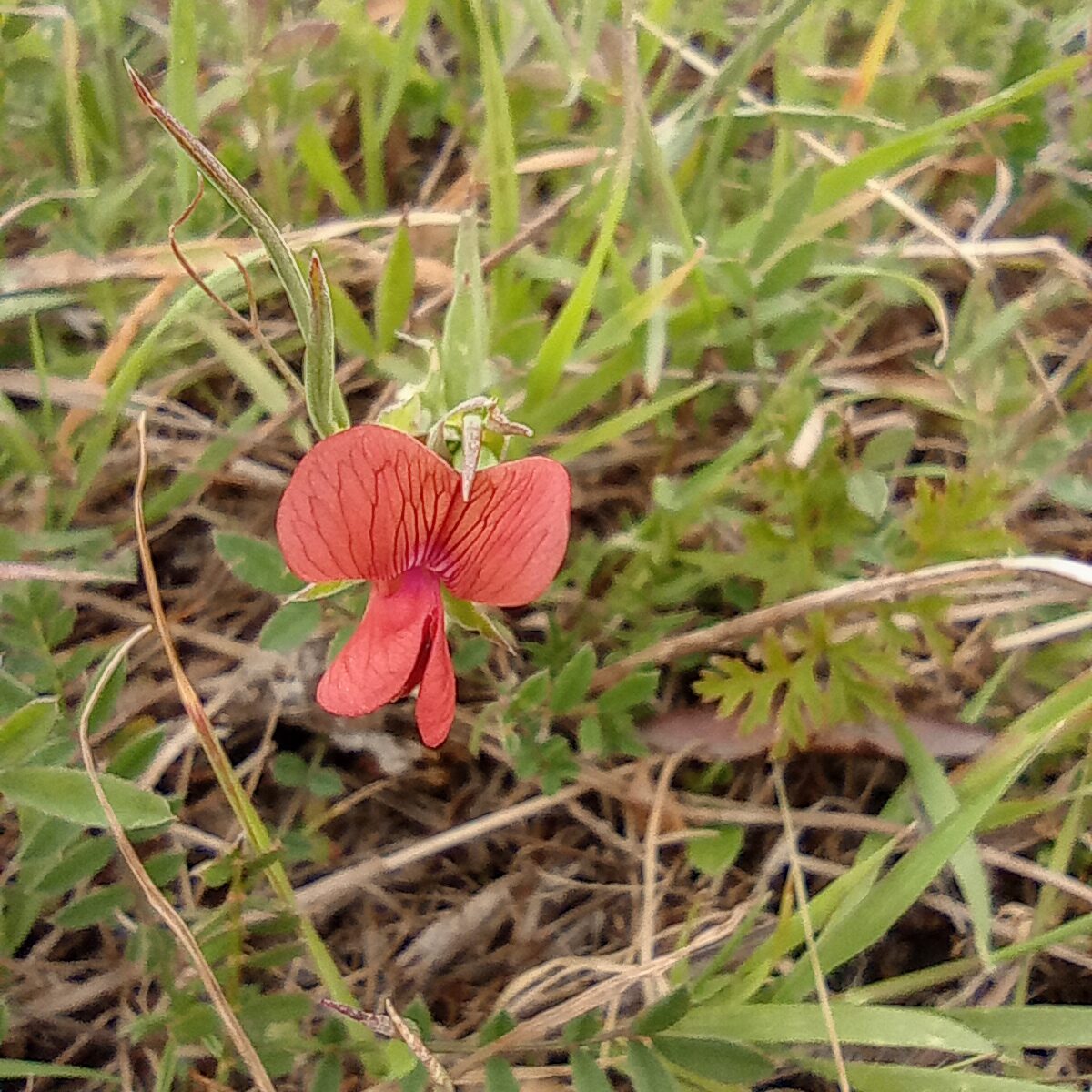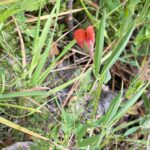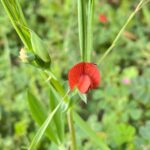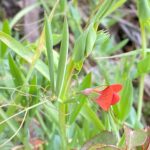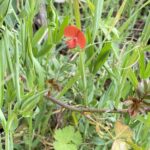Λάθυρος ο ερέβυνθος
Etymology of Lathyrus cicera: Lathyrus comes from the Ancient Greek word "Lathyros" [Λάθυρος], from the prefix "λα-" [la-] meaning "extremely," and the suffix "-θυρος" [–thyros] meaning "passionate", referring to the ancient belief in the plant's supposed aphrodisiacal powers. "Cicera" is Latin and it was a classical Latin name for the "chick-pea" (Ceci bean or Garbanzo) since this plant resembles the common chick-pea (Cicer arietinum).
There are at least 14 Lathyrus species/kinds growing on their own in the wild Cypriot habitat. There are some additional domesticated species and subspecies growing in gardens.
Lathyrus cicera is encountered in the most regions of Cyprus, excluding the Karpasia peninsula and the Akamas region. It grows up to an altitude of 1150 metres, primarily on grassland (cultivated or not). Its flowering period is between February and May.
How to identify Lathyrus cicera:
Lathyrus cicera is similar to Lathyrus blepharicarpos, Lathyrus setifolius and Lathyrus sphaericus.
- Lathyrus cicera is redder than dark orange which is the color of Lathyrus blepharicarpos. Lathyrus setifolius and Lathyrus sphaericus are bright red.
- Lathyrus cicera has deltoid calyx teeth, Lathyrus setifolius and Lathyrus sphaericus have more linear, narrow calyx teeth. Lathyrus cicera's calyx teeth are adpressed to the corolla at anthesis, Lathyrus blepharicarpos's are not, they are reflexed.
- Lathyrus cicera does not have grass-like leaflets as Lathyrus setifolius and Lathyrus sphaericus.
- Lathyrus cicera's standard is generally less than 15 mm long, it happens the opposite with Lathyrus sphaericus.
- Lathyrus cicera's peduncles and pedicels are not capillary, they are in Lathyrus setifolius.
